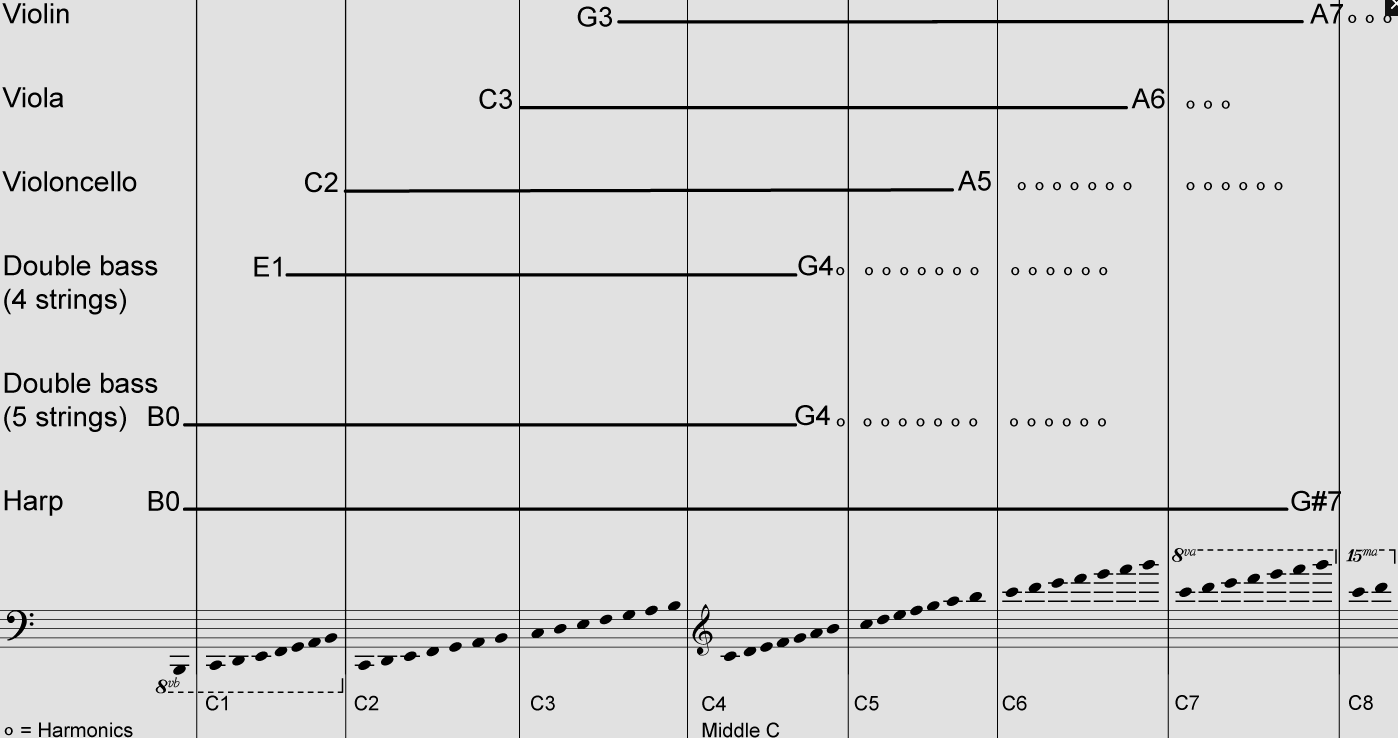String
It’s better to write each part separately – your arrangement will sound more like a living string ensemble.
- Each line should be able to stand alone.
- Rather than writing a series of block chords where everyone changes note at the beginning of the bar, introduce independent melodic movement. You give the player a chance to add expression. It varies the ensemble sound and helps the music breathe and come to life.
Don’t forget that a small string ensemble can be forcefully percussive as well as lyrically melodic.

there’s a lot of overlap between instruments.
- The viola, which is pitched a fifth lower than the violin, can sound great higher up within the lower violin range
- all 5 instruments are capable of covering the G3-G4 register.
Violin
"brilliant"
Violin1 usually plays higher notes than violin2
Viola
"biting and nasal"
Cello
"chest voice"
Try giving the melody to the Cello, and giving the bass line to the viola
Double Bass
"penetrating"
Usually the double bass will get either the same notes as the cello but down an octave, or otherwise have a pretty simple bass line while the other string instruments bring in the complexity.
E Resources
switch